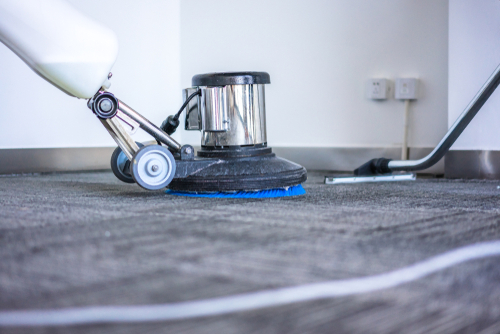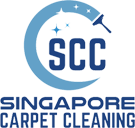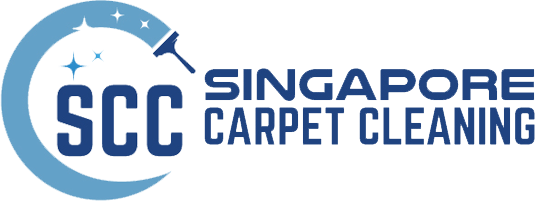
Carpet Cleaning for Events: Elevating Your Space’s Appeal
September 3, 2023
Office Carpet Care: How to Maintain a Professional Environment
November 9, 2023Removing Odors from Carpets: Causes and Effective Solutions

Removing Odors from Carpets: Causes and Effective Solutions. The presence or absence of odors profoundly influences the ambiance of indoor spaces.
Carpeted areas, in particular, can become repositories for various odorous particles, impacting the overall freshness of the environment.
Eliminating carpet odors is not just a matter of aesthetics; it’s essential to creating a comfortable and inviting space.
This comprehensive guide delves into the causes of carpet odors and presents practical solutions to banish them from your living or working areas.
Understanding the Impact of Odors in Indoor Spaces
The olfactory experience plays a significant role in our perception of a space. Unpleasant odors can disrupt comfort, making addressing any sources of carpet-related odors essential.
Carpet odors can permeate an entire room, creating an unwelcoming atmosphere. Ensuring that your carpets are free from lingering odors contributes to a more pleasant and inviting indoor space.
Identifying Common Carpet Odor Sources
The battle against carpet odors begins with identifying their sources. Understanding where these odors originate is the first step toward effective odor elimination.
Pets are beloved members of many households, but they can introduce odors that cling to carpets. Pet dander, urine, and other bodily fluids can create persistent and unpleasant smells.
Enzymatic cleaners offer a specialized solution for removing organic pet odors. These cleaners break down the molecules responsible for the smell, ensuring thorough elimination.
Enzymatic cleaners are particularly effective for organic odors. They target the biological components of the odor, neutralizing them at the molecular level.
Food and Beverage Spills

Accidental spills of food and beverages are common culprits behind lingering carpet odors. The absorbed substances can create long-lasting smells if not promptly addressed.
Spilled food and beverages can seep into carpet fibers, leading to persistent odors. Treating the affected area promptly is crucial to prevent these odors from setting in.
Baking soda and vinegar, two household staples, are effective natural deodorizers. Sprinkling baking soda on the carpet and using a vinegar and water solution can help neutralize odors.
Moisture and Mold Growth
Moisture is a prime contributor to mold and mildew growth, resulting in musty and unpleasant odors. Prevention is key to avoiding these odorous issues.
Mold and mildew thrive in damp environments. Keeping your carpets dry and well-ventilated can help prevent their growth and the subsequent odors.
Musty odors often indicate the presence of mold or mildew. Identifying and rectifying the underlying moisture issue is essential to addressing these odors.
Understanding Odor Absorption

Carpet fibers have a unique ability to trap and retain odor particles, leading to prolonged smells. Understanding the dynamics of odor absorption is vital in tackling the issue.
How Carpets Trap and Retain Odor Particles
The structure of carpet fibers allows them to capture odor molecules effectively. Once absorbed, these molecules can continue emitting odors over time.
Factors Affecting the Intensity of Odor Absorption
Various factors influence how intensely carpets absorb odors. The type of fiber, the pile’s density, and the odor source’s nature all play roles.
Impact of Poor Ventilation
Insufficient air circulation can exacerbate odor retention in carpets. Stale air becomes trapped, intensifying the persistence of unwanted smells.
Stale Air and Odor Accumulation in Enclosed Spaces
Enclosed spaces are more prone to stale air accumulation, which can lead to the concentration of odors. Proper ventilation is essential to prevent this issue.
Improving Air Circulation for Odor Prevention
Increasing air circulation through open windows or using fans helps disperse stagnant air, reducing the chances of odor accumulation.
Immediate Odor Removal Techniques

Baking Soda: A Natural Deodorizer
Baking soda, known for its versatility, is an excellent natural deodorizer for carpets. Its porous nature allows it to absorb odors effectively.
Generously sprinkle baking soda over the carpet, focusing on areas with noticeable odors. Allow the baking soda to sit for a few hours before vacuuming it up.
Vacuuming after using baking soda helps remove both the absorbed odors and the baking soda particles, leaving your carpet smelling fresher.
Vinegar and Water Solution
Vinegar’s acidic properties make it effective in neutralizing odors. A vinegar and water solution can be used to tackle stubborn smells.
Mix equal parts white vinegar and water in a spray bottle. Lightly mist the affected area with the solution, then blot with a clean cloth to remove excess moisture.
Rinsing the area with water after using vinegar helps prevent any lingering vinegar scent. Blot the area again to remove excess moisture.
Dealing with Specific Odor Types
Different odor types require specific approaches to ensure effective removal.
- Smoke and Tobacco Odors: Smoke and tobacco odors can permeate carpets, leaving unpleasant smells.
- Removing Lingering Smoke Smells from Carpets: Regular vacuuming and steam cleaning can help remove surface smoke particles. However, deeper odors may require more intensive treatments.
- Using Activated Charcoal for Smoke Odor Removal: Activated charcoal is a natural odor absorber. Placing bowls of activated charcoal near the affected area can help neutralize smoke odors.
Biological Odors: Urine and Vomit

Biological odors, such as urine and vomit, require specialized cleaning to ensure complete removal.
Enzymatic cleaners are highly effective for breaking down the compounds responsible for biological odors.
Complete removal of the odor source is essential for successful elimination. Follow the manufacturer’s instructions for enzymatic cleaner application.
Professional Odor Removal Services
In some cases, the expertise of professionals is necessary to eliminate stubborn odors effectively. Persistent odors that resist DIY treatments may indicate an underlying issue that requires professional attention.
Stubborn odors that persist despite your efforts could indicate deeper problems, such as mold growth or deep-seated contamination.
Professional odor removal services offer specialized expertise and equipment to address even the most challenging odorous issues.
Ozone Treatment for Odor Elimination
It is a powerful method for eliminating odors at the molecular level. Ozone generators release ozone, which reacts with odor molecules, neutralizing them.
Professionals should conduct ozone treatment, as excessive ozone exposure can be harmful. Proper ventilation is essential during and after treatment.
Preventive Measures for Long-Term Odor Control

Preventing odors from returning requires a proactive approach and consistent maintenance.
Regular Vacuuming and Cleaning
Routine vacuuming prevents debris and particles from settling into carpet fibers, reducing the likelihood of odors developing.
Frequent vacuuming removes surface dirt and particles before they become trapped in the carpet, contributing to odor retention.
Slow and deliberate vacuuming passes to ensure that the vacuum cleaner effectively lifts dirt and particles from the carpet fibers.
Immediate Cleaning of Spills
Promptly cleaning spills prevent them from seeping into the carpet and creating lasting odors.
Use absorbent materials to soak up liquids immediately after a spill occurs. Blot the area gently to prevent further saturation.
Quickly addressing spills and accidents prevents them from permeating the carpet fibers and creating long-lasting odors.
Proper Ventilation and Air Quality
Fresh air circulation plays a vital role in preventing the accumulation of stale odors.
Periodically open windows to allow fresh air to circulate, flushing out any stagnant or odorous air.
Using exhaust fans and cross-ventilation techniques helps ensure that indoor air remains fresh and free from lingering odors.
Air purifiers with HEPA filters can capture and eliminate airborne particles, improving air quality and reducing odors.
Humidity Control for Mold Prevention
Maintaining optimal indoor humidity levels prevents mold growth and the accompanying musty odors.
Using dehumidifiers in damp spaces helps regulate humidity levels, reducing the chances of mold-related odors.
Dehumidifiers extract excess moisture from the air, creating an inhospitable environment to mold growth and musty odors.
Finalizing Odor Removal
Once you’ve implemented the appropriate strategies, it’s time to assess the success of your odor removal efforts.
After treating odors, take a moment to revisit the treated areas and perform a sniff test to determine if any residual smells remain.
A final sniff test provides a reliable indication of whether the odors have been successfully eliminated or if further action is required.
If lingering odors persist after initial treatment, consider reapplying the chosen method or seeking professional assistance.
Removing Odors from Carpets: Causes and Effective Solutions – Conclusion

Regaining control over your indoor environment by eliminating carpet odors is rewarding.
By understanding the diverse sources of odors and employing effective solutions, you can ensure that your living or working space remains inviting, fresh, and free from unwelcome scents.
Through proactive measures, careful cleaning, and, if necessary, professional intervention, you can enjoy an atmosphere that truly reflects your desired ambiance: one of cleanliness, comfort, and olfactory delight.
Are you seeking professional and reliable carpet cleaning services in Singapore? Contact us today!

